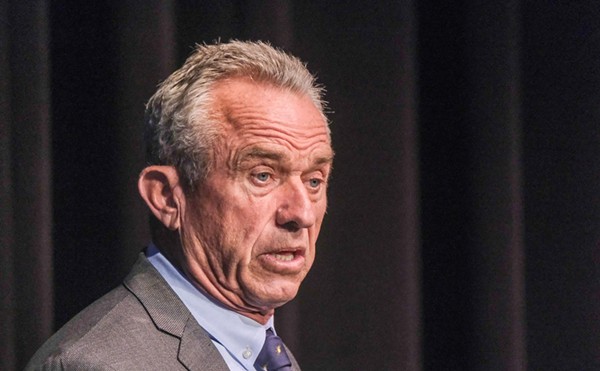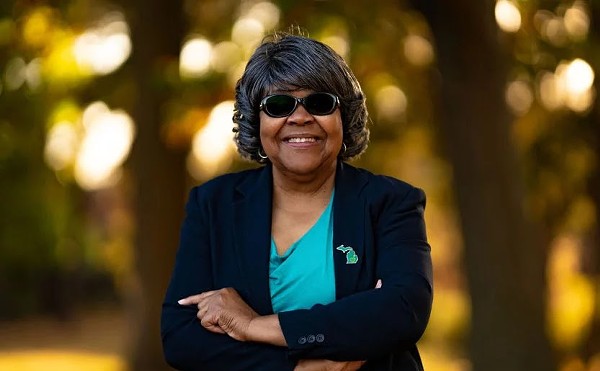With the release of El Mariachi eight years ago, Robert Rodriguez became the poster boy for American independent cinema as his fast, furious, $7,000 shoot-’em-up became a surprise arthouse sensation. That experience, detailed in his book Rebel Without a Crew, set the template for Rodriguez’s filmmaking philosophy and instilled a healthy disregard for Hollywood’s bigger-is-better methodology. Tagged as an action director, he made the genre films Desperado, From Dusk Till Dawn and The Faculty, but the Texas-born Rodriguez (the third of 10 children) always “wanted to make a family adventure,” and finally has, with the wildly inventive Spy Kids.
“I started making movies at the age of 12,” he says, “and all my movies starred my little brothers and sisters. You go to a film festival, and very rarely was there anything with kids in it, and they would get the most laughs. You had all these morose art films, then suddenly here comes a comedy, and I would always win. So I thought, that’s my trump card: kids.”
The Spanish-language El Mariachi was a cheap one-off for the Latin American video market: “It’s held together with Scotch tape,” he asserts. “I can’t believe that got released by a studio.” And most fans didn’t realize that his prior output includes a cartoon strip called “Los Hooligans” (based on his family) and the award-winning 16 mm short, Bedhead.
So with his wife and co-producer, Elizabeth Avellán, Rodriguez set out to make the ambitious Spy Kids in their homebase of Austin, Texas. His first step was thinking like a child.
“I feel like I’m still a big kid, and that’s part of the reason why I wanted to do this movie,” says Rodriguez, “but when I look at my own kids’ drawings, and their very free and uncensored thinking, I realize, ‘Wow, I can’t come up with that stuff anymore.’ That stuff is beyond your reach as an adult. I had to go back to old ideas I had as a kid. I can never come up with the Thumb-Thumbs again. That was my first art contest when I was 11. It was this mini, Salvador Dali-like drawing of these thumb guys kicking a soccer ball around that was really an eyeball. It won and got published and I kept it. So 20 years later, to see the thumbs running around onscreen is so satisfying.”
What Rodriguez brings to Spy Kids is that spontaneous sense of wonder fused with an insatiable curiosity about the mechanics of moviemaking, which has been radically altered by the advent of new technologies including high-quality imaging software for home computers. Early on, Rodriguez made several crucial decisions: to make an action-adventure movie using Mariachi-derived guerilla filmmaking techniques; to stick to a small budget (at $36 million, Spy Kids cost half the Hollywood average); and to function as his own visual-effects supervisor (he collaborated with Montreal-based effects house Hybride via Internet hookup). This meant careful planning and the kind of hands-on approach that many filmmakers gladly leave behind as they grow more successful.
“I used to love magic tricks when I was little,” he explains, “and that’s what moviemaking is. I’m always thinking about how to achieve a visual, and I think people kind of lose that enthusiasm as the budgets get bigger and you can just farm it out to a big company to do it for you. You start forgetting that you don’t really have to saw a lady in half, you can create an illusion that it’s really being done for nothing. Matchsticks and fishing line are usually behind the best tricks. I’ve got no ego — I can do it the down-and-dirty way.
“The future of filmmaking really is in those types of effects,” he continues. “I think filmmakers will be able to really stretch their imagination by applying low-budget effects, and not just let it be in the realm of big studio films. It’s going to be revolutionary in the next year or so. It’s like vinyl records to recordable CDs — there’s just so much more visually you can come up with using the digital format.”
In Spy Kids, Rodriguez combines James Bond espionage with the fantastical worlds of Willy Wonka and the Chocolate Factory and Chitty Chitty Bang Bang and the wholesome madcap quality of What’s Up, Doc? to create a family film that can entertain parents and children alike.
“My mom used to take the 10 of us to the old revival theater,” he recalls, “and we’d sit there and see the movie several times, MGM musicals or Hitchcock movies. It was so enjoyable to go as a family and then come back and talk about it or repeat lines from the movie. It was a real bonding experience.
“I really wanted to give families a movie they can all go out to see,” continues Rodriguez, “to make a film that’s very cool and very uncool at the same time, that has gadgets and spy things yet talks about the importance of family. I just wanted it to have a lot more going for it, to be very creative and honor a child’s imagination.”
Serena Donadoni writes about film for the Metro Times. E-mail her at [email protected]




